
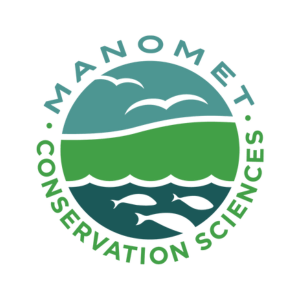
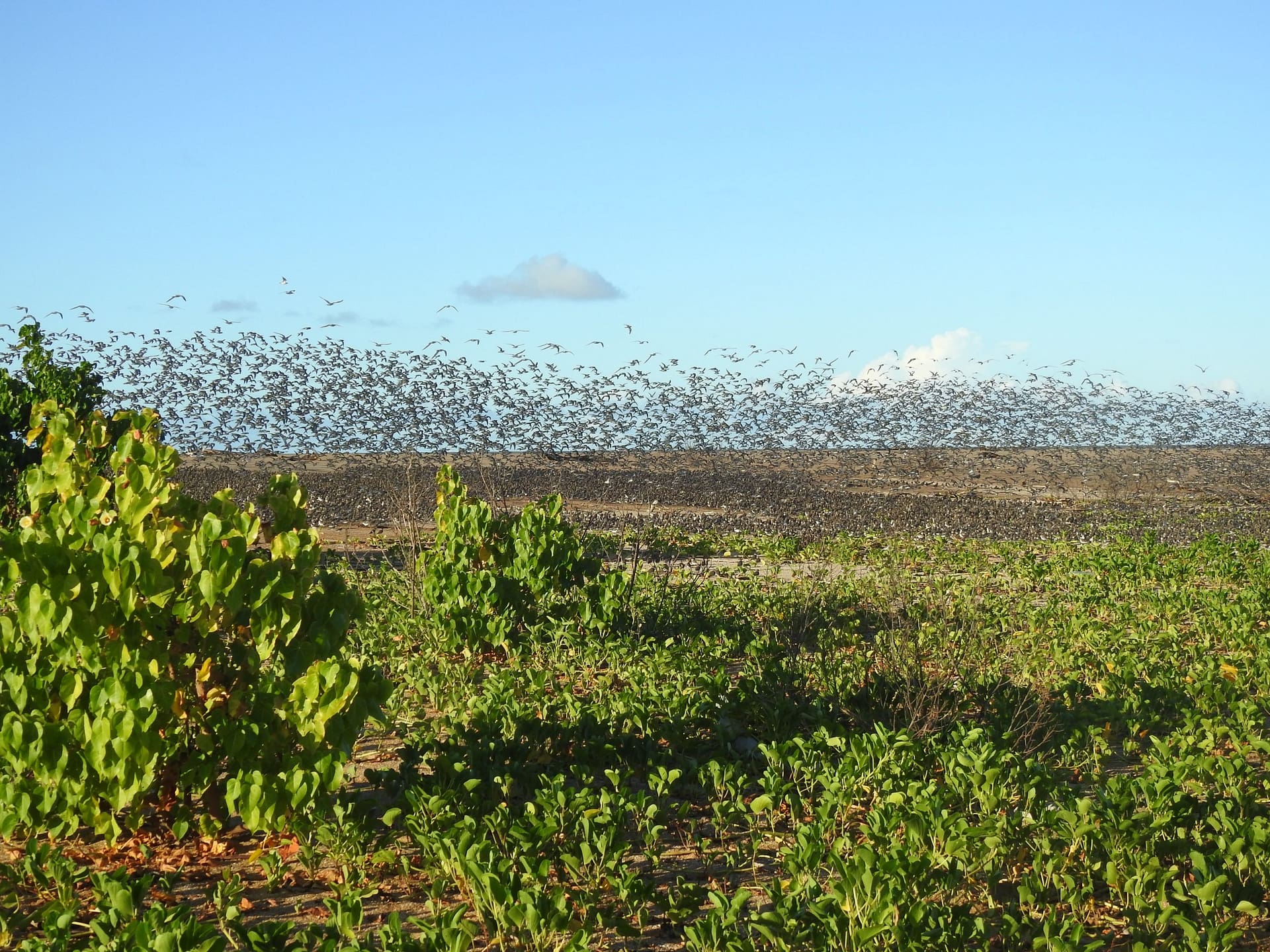
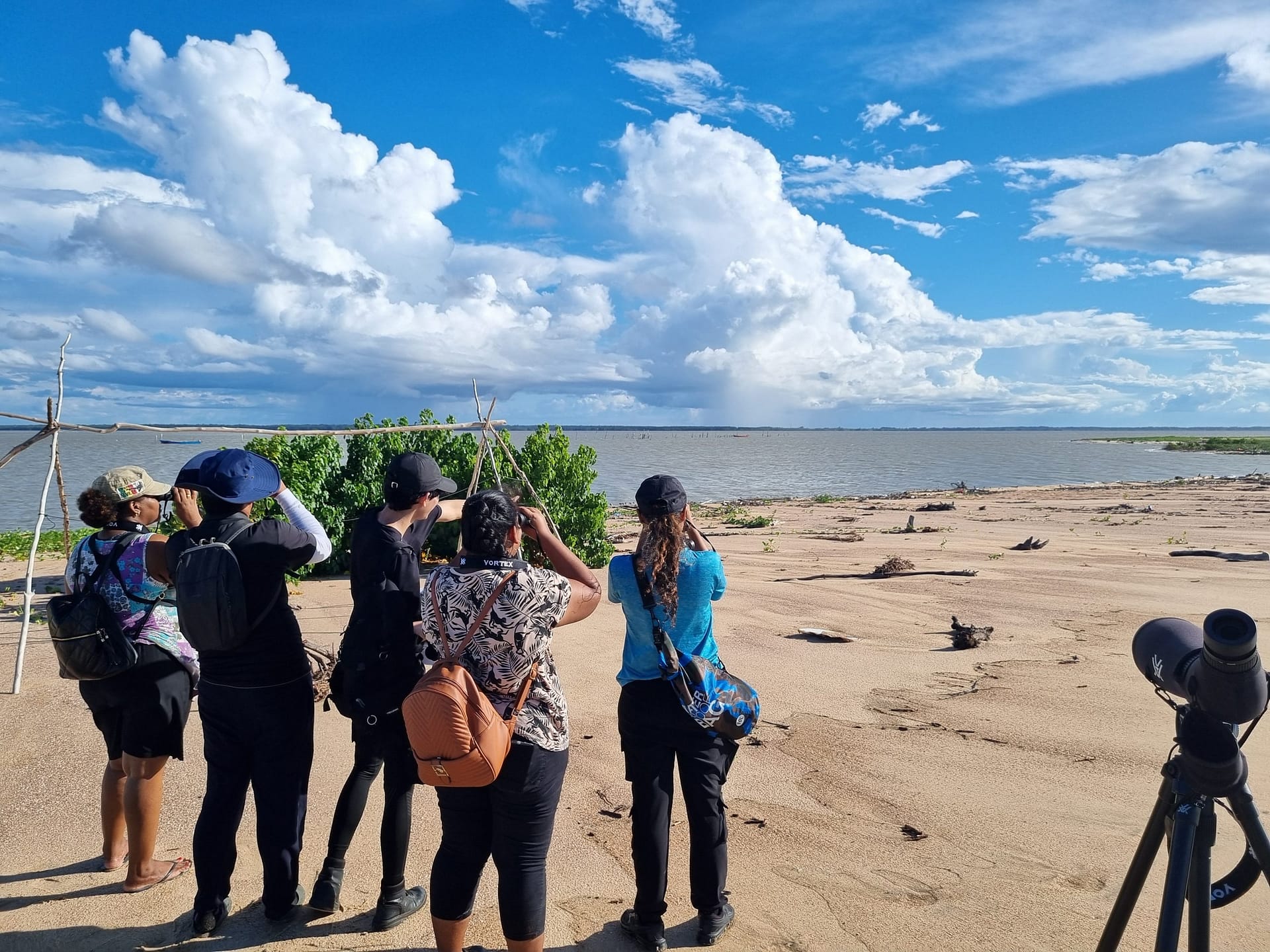

A regional conservation plan for the Guianas Green Coast
Since 2024
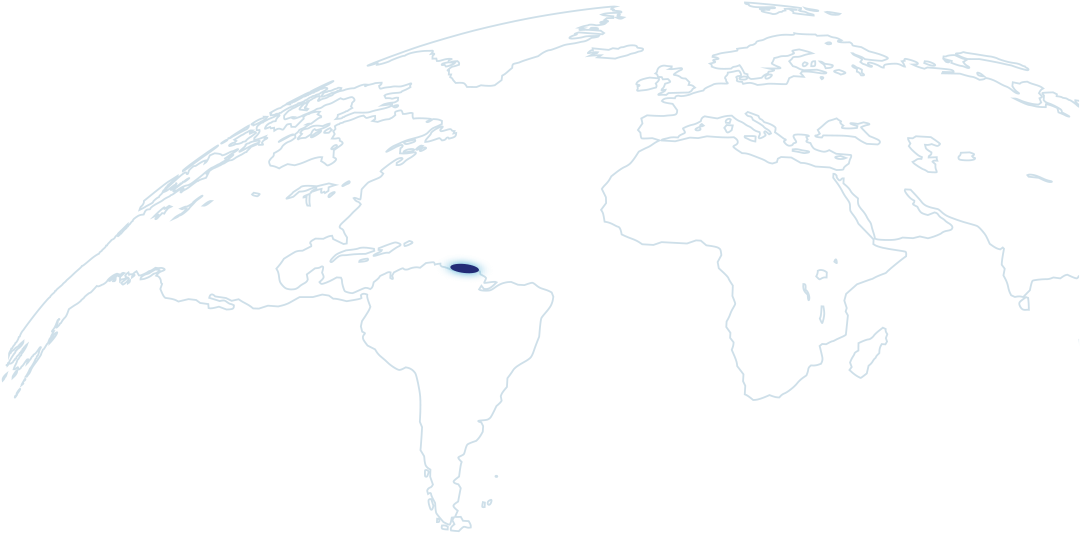
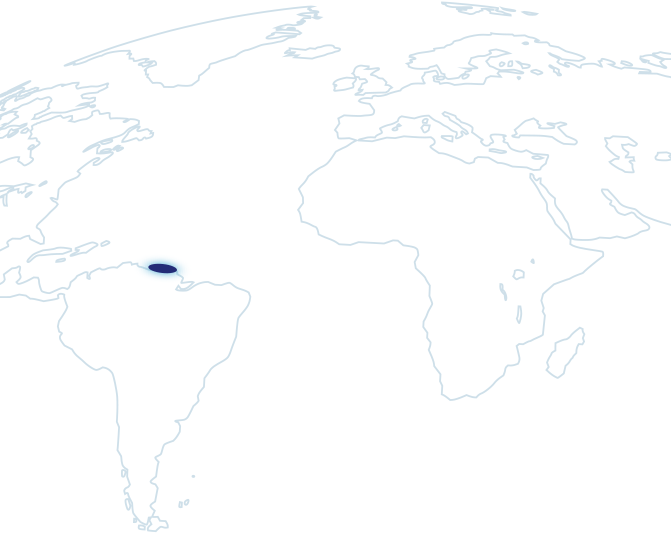
The coast of French Guiana, Suriname and Guyana, (the Guiana Bight), is one of the most important areas for migratory shorebirds in the Americas. Year after year, millions of these long-distance migrants depend on the extensive mudflats and mangroves of this “Green Coast” to refuel and rest. They share these habitats with local communities that live along the coastal plain and depend on natural resources for their daily livelihoods (e.g., for fishing, small-scale agriculture, ecotourism). These coastal areas also provide important ecological services, such as purifying water and protecting the mainland from storm surges and rising sea levels. Further, the largely intact mangroves along the Guiana Bight store huge amounts of CO2.
Despite the critical importance of these habitats, threats are many, and growing rapidly. The natural integrity of the coast and its resources are under great pressure due to poverty, unsustainable use of natural resources and, perhaps most pressing, the international interest in offshore oil reserves. The discovery of significant offshore oil reserves in the Guiana Basin has already led to a “fever of development”. Protected areas have been established in the coastal zone of all three countries. However, many suffer from inadequate technical and financial management capabilities, and lack of human capacity is also a factor limiting effectiveness. Safeguarding the natural resources of the Guiana Bight is dependent on trilateral measures that protect and safeguard the shared coastal zone as one functionally-intact ecological entity.
The main objectives that together will form the pillars of the conservation plan for the coastal ecosystems of the Guiana Bight include:
The long-term (≥ 10 years) outcome of the initiative is the effective conservation and sustainable management of the mangrove and mudflat ecosystems of the “Green Coast” of the or “Guianas Bight” for the benefit of biodiversity and local communities.
In its initial phase, the programme will develop a regional conservation plan for coastal ecosystems of the Guianas Bight with key stakeholders and build a multi-sectoral regional partnership to deliver it.
The programme will also consolidate habitat management and restoration at Bigi Pan MUMA with local community support as an example of effective conservation action in the region.